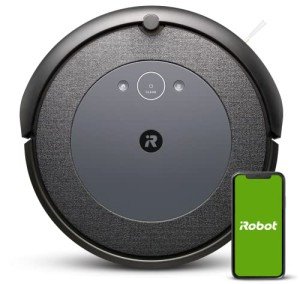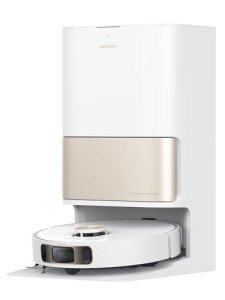Buzzwords De-Buzzed: 10 More Ways To Say Robotic Vacuum Cleaner Best
페이지 정보
작성자 Maura 작성일 25-02-21 10:42 조회 4회 댓글 0건본문
 What Makes a Robot Vacuum Cleaner Best?
What Makes a Robot Vacuum Cleaner Best?The best robot vacuums have an efficient engine and a durable set of bristles or rollers. They also come with large dustbins and an extended battery life.
Some models map homes using smart mapping. They can pause to recharge, then pick up cleaning where they have left off. They can even create no-go zones and recognize different surfaces.
Object Avoidance
Object detection is an essential feature for robot vacuums as it allows them to avoid getting into small objects like socks, shoes or toys that aren't on the floor but on furniture or other things. These systems use cameras built into the system to identify objects that are in an AI database and then teach the vacuum how to avoid them. The Eufy S1 Pro, for instance, makes use of a variety of sensors including 3D Time of Flight (sending light pulses to gauge the distance and depth of surrounding objects) and 3D Structured Light (beaming a pattern of lights across the space and analyzing the light distortion to create a map) to effectively steer clear of obstacles.
A more recent addition to the obstacle avoidance repertoire is artificial intelligence and visual interpretation, which enables robots to better identify and understand what they're encountering. This software utilizes two cameras to look around and analyze it in real-time. The ECOVACS DEEBOT uses this software to detect up to 30 kinds of objects, including cables, shoes and pet poop.
Some models use LiDAR for navigation. This technology emits lasers and measures the time taken to bounce off surrounding surfaces to create an 3D map. This is able to detect walls, furniture, and even stairs. However, it might not work as well in low lighting or with reflective or transparent objects.
Whatever cameras or sensors are employed It is essential that your robot has a long battery lifespan so that it can complete your home without having to return to the dock for recharge. Look for a model that can run for at least an hour or more, based on the size of your living area.
Self-Emptying Bases
Some robot vacuum cleaners feature self-emptying bases, which could reduce the frequency with which you must empty your dustbin. They are considered a premium feature and can increase the price of a robotic vacuum bot cleaner.
The most effective robots have bases that can hold a bin, or a movable dustbin. It is possible to open it and empty it when full. This will save you time by decreasing the amount of time spent worrying about when to empty a dustbin.
Self-emptying bases are found on all the robots in our review, except for the bare-bones Roomba I3+, which doesn't have a self-emptying base. This is a shame since this robot is extremely efficient. It had the top mapping results out of all the robots we tested and has superb navigational capabilities. It has a great mower and docking system that can empty the water tank automatically when required.
It lacks iRobot’s advanced obstacle avoidance technology and digital keep-out zone, however it can get tangled up in rugs and cables, and is unable to see rogue shoelaces or socks. It's still the perfect choice for a small, well-maintained home.
Its other strong points include its aforementioned navigation technology, including drop sensors and bump sensors, and the ability to map out the entire house cleaning robot; visit these guys, with cameras and laser. It is easy to use, has many settings and modes, and performs well when cleaning or mowing. Its smart-home function allows it to be controlled via voice commands via Amazon Alexa or Google Assistant. This makes it easier to use in the event that you own multiple smartphones or tablets, and don't want to purchase the traditional remote.
App Controls
Certain robots are able to connect to Wi-Fi, allowing you to control them with your smartphone or tablet. This is particularly useful in large homes that have multiple floors. You might need to navigate down an escalator to reach the robot before it is able to reach the bottom. This removes the need for an additional long cord so you can move your furniture without worrying about the robot becoming tangled in it or running out power when cleaning.
The app functions as a central control point to monitor and schedule tasks. The app allows you to customize the cleaning mode, power and the water level of your robotic cleaner. This feature is particularly beneficial in homes with multiple floor types -- for instance, carpet or tile because you can assign the robot to clean every room with the correct power and mode.
Some models have a built-in video camera that transmits a live feed directly to the application. These models are perfect for pet owners and those with small children who want to watch the robot while it works. Smart robots also use sensors to know when they are near the edges of an area and return to their docking station. This prevents them from encroaching on an area and makes sure they've cleaned every surface in your home.
Certain models can automatically empty the dustbin and wash their mop heads and blow dry them between cleaning sessions. This reduces the requirement for manual maintenance and the robot cleaner will work better for a longer time. You can also find a model with a longer battery life that helps you avoid the hassle of mid-cleaning recharges.
Sensors
A lot of robot vacuums are fitted with sensors that let them navigate through your home. They can be used on area rugs, carpets as well as hard floors like tiles and wood. They're not the same as the full-size canister or upright vacuum cleaner, but they do offer excellent suction on dust and dirt and can be a great way to keep the floor free of dirt between deep cleanings with a traditional machine.
Sensors enable the robot to navigate around your home by detecting obstacles, and avoiding falling on stairs. You can also create physical and Robot Vacuum Cleaner Comparison virtual "no go" zones using boundary strips or a virtual wall (like the ones used by eufy), to prevent the robot entering specific areas in your home. Some robots have cliff sensors that alert you when your robot is about to fall into an obstacle.
The type of navigation system the robot uses depends on your budget and the layout of your home. Some of the most advanced robotic vacuums use LiDAR-based sensors to scan and map rooms, ensuring accurate and efficient navigation. These systems can be expensive however they give the most efficient results. Budget-friendly models with rudimentary bump navigation systems aren't as precise and may miss certain areas. They're great for avoiding big obstacles, but they may still be unable to detect dirt in crevices or around baseboards.
Look for a model with an extra-large dust bin as well as a long battery lifespan. You can find models that dock and recharge and then pick up where they left off. This will save you time. In addition to navigation, you can make the most of your robot vacuum by making sure you have everything ready for each cleaning session. Make sure that all power cords and toys are removed and out of the robot's path, and empty the bin after each cleaning. Clean the charging port and sensors to ensure your robot is in good health.
Navigation
The best inexpensive robot vacuum cheap robot vacuum cleaner vacuums create digital maps of your home with mapping technology in the first cleaning session. It assists them in recognizing the different patterns, like hard and carpeted floors, and ensures that all areas are clean. It also prevents your robots from cleaning the same areas repeatedly to increase efficiency and decrease battery consumption. Many high-end models have the option of saving a map of your house to be used in the future which is a great feature for larger homes.
The majority of robotic vacuums have an obstacle avoidance system that stops them from running over cords, socks, or shoes. However, these sensors can't always recognize smaller objects. A few years ago manufacturers began adding more sensors to their robots, allowing them to detect and avoid household objects that traditional sensors could not. These include cliff and wall sensors, which function by bouncing infrared light beams off of surfaces to calculate distances.
Some of these sensors are built into the robot's base while others require a separate attachment. In general, these sensors assist the robot to navigate without danger, avoid falling down stairs and avoid clutter. Certain models have anti-drop sensors which prevent the robot from colliding with furniture and walls.
 LiDAR mapping is the latest and most advanced technology for navigation and it's something you should look for pbprog.ru in robot vacuum. This kind of system utilizes the spinning laser sensor that is placed on the top robot vacuum of the robot to map your home. By scattering infrared beams across furniture and walls it can determine the layout of your home. This helps to plan efficient routes and clear your entire house.
LiDAR mapping is the latest and most advanced technology for navigation and it's something you should look for pbprog.ru in robot vacuum. This kind of system utilizes the spinning laser sensor that is placed on the top robot vacuum of the robot to map your home. By scattering infrared beams across furniture and walls it can determine the layout of your home. This helps to plan efficient routes and clear your entire house.- 이전글You'll Never Be Able To Figure Out This Blue African Grey Parrot's Benefits
- 다음글The 10 Most Scariest Things About Good Robot Vacuum
댓글목록
등록된 댓글이 없습니다.


